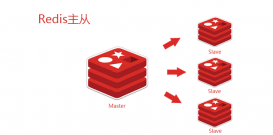前言
本文主要介紹的是關(guān)于Redis性能提升之Batch批量讀寫(xiě)的相關(guān)內(nèi)容,分享出來(lái)供大家參考學(xué)習(xí),下面來(lái)看看詳細(xì)的介紹:
提示:本文針對(duì)的是StackExchange.Redis
一、問(wèn)題呈現(xiàn)
前段時(shí)間在開(kāi)發(fā)的時(shí)候,遇到了redis批量讀的問(wèn)題,由于在StackExchange.Redis里面我確實(shí)沒(méi)有找到PipeLine命令,找到的是Batch命令,因此對(duì)其用法進(jìn)行了探究一下。
下面的代碼是我之前寫(xiě)的:
|
1
2
3
4
5
6
7
8
9
10
11
12
13
14
15
16
17
18
19
20
21
22
23
24
25
26
|
public List<StudentEntity> Get(List<int> ids){ List<StudentEntity> result = new List<StudentEntity>(); try { var db = RedisCluster.conn.GetDatabase(); foreach (int id in ids.Keys) { string key = KeyManager.GetKey(id); var dic = db.HashGetAll(key).ToDictionary(k => k.Name, v => v.Value); StudentEntity se = new StudentEntity(); if (dic.Keys.Contains(StudentEntityRedisHashKey.id.ToString())) { pe.id = FormatUtils.ConvertToInt32(dic[StudentEntityRedisHashKey.id.ToString()], -1); } if (dic.Keys.Contains(StudentEntityRedisHashKey.name.ToString())) { pe.name= dic[StudentEntityRedisHashKey.name.ToString()]; } result.Add(se); } catch (Exception ex) { } return result;} |
從上面的代碼中可以看出,并不是批量讀,經(jīng)過(guò)性能測(cè)試,性能確實(shí)是要遠(yuǎn)遠(yuǎn)低于用Batch操作,因?yàn)镠ashGetAll方法被執(zhí)行了多次。
下面給出批量方法:
二、解決問(wèn)題方法
具體的用法是:
|
1
2
3
4
5
|
var batch = db.CreateBatch();...//這里寫(xiě)具體批量操作的方法batch.Execute(); |
2.1批量寫(xiě):
具體代碼:
|
1
2
3
4
5
6
7
8
9
10
11
12
13
14
15
16
17
18
19
20
21
|
public bool InsertBatch(List<StudentEntity> seList){ bool result = false; try { var db = RedisCluster.conn.GetDatabase(); var batch = db.CreateBatch(); foreach (var se in seList) { string key = KeyManager.GetKey(se.id); batch.HashSetAsync(key, StudentEntityRedisHashKey.id.ToString(), te.id); batch.HashSetAsync(key, StudentEntityRedisHashKey.name.ToString(), te.name); } batch.Execute(); result = true; } catch (Exception ex) { } return result;} |
這個(gè)方法里執(zhí)行的是批量插入學(xué)生實(shí)體數(shù)據(jù),這里只是針對(duì)Hash,其它的也一樣操作。
2.2批量讀:
具體代碼:
|
1
2
3
4
5
6
7
8
9
10
11
12
13
14
15
16
17
18
19
20
21
22
23
24
25
26
27
28
29
30
31
32
33
34
35
36
|
public List<StudentEntity> GetBatch(List<int> ids){ List<StudentEntity> result = new List<StudentEntity>(); List<Task<StackExchange.Redis.HashEntry[]>> valueList = new List<Task<StackExchange.Redis.HashEntry[]>>(); try { var db = RedisCluster.conn.GetDatabase(); var batch = db.CreateBatch(); foreach(int id in ids) { string key = KeyManager.GetKey(id); Task<StackExchange.Redis.HashEntry[]> tres = batch.HashGetAllAsync(key); valueList.Add(tres); } batch.Execute(); foreach(var hashEntry in valueList) { var dic = hashEntry.Result.ToDictionary(k => k.Name, v => v.Value); StudentEntity se= new StudentEntity(); if (dic.Keys.Contains(StudentEntityRedisHashKey.id.ToString())) { se.id= FormatUtils.ConvertToInt32(dic[StudentEntityRedisHashKey.id.ToString()], -1); } if (dic.Keys.Contains(StudentEntityRedisHashKey.name.ToString())) { se.name= dic[StudentEntityRedisHashKey.name.ToString()]; } result.Add(se); } } catch (Exception ex) { } return result;} |
這個(gè)方法是批量讀取學(xué)生實(shí)體數(shù)據(jù),批量拿到實(shí)體數(shù)據(jù)后,將其轉(zhuǎn)化成我們需要的數(shù)據(jù)。下面給出性能對(duì)比。
2.3性能對(duì)比:
10條數(shù)據(jù),約4-5倍差距:

1000條數(shù)據(jù),約28倍的差距:

隨著數(shù)據(jù)了增多,差距將越來(lái)越大。
三、源碼測(cè)試案例
上面是批量讀寫(xiě)實(shí)體數(shù)據(jù),下面給出StackExchange.Redis源碼測(cè)試案例里的批量讀寫(xiě)寫(xiě)法:
|
1
2
3
4
5
6
7
8
9
10
11
12
13
14
15
16
17
18
19
20
21
22
23
24
|
public void TestBatchSent() { using (var muxer = Config.GetUnsecuredConnection()) { var conn = muxer.GetDatabase(0); conn.KeyDeleteAsync("batch"); conn.StringSetAsync("batch", "batch-sent"); var tasks = new List<Task>(); var batch = conn.CreateBatch(); tasks.Add(batch.KeyDeleteAsync("batch")); tasks.Add(batch.SetAddAsync("batch", "a")); tasks.Add(batch.SetAddAsync("batch", "b")); tasks.Add(batch.SetAddAsync("batch", "c")); batch.Execute(); var result = conn.SetMembersAsync("batch"); tasks.Add(result); Task.WhenAll(tasks.ToArray()); var arr = result.Result; Array.Sort(arr, (x, y) => string.Compare(x, y)); ... } } |
這個(gè)方法里也給出了批量寫(xiě)和讀的操作。
總結(jié)
好了,先說(shuō)到這里了。以上就是這篇文章的全部?jī)?nèi)容了,希望本文的內(nèi)容對(duì)大家的學(xué)習(xí)或者工作能帶來(lái)一定的幫助,如果有疑問(wèn)大家可以留言交流,謝謝大家對(duì)服務(wù)器之家的支持。















